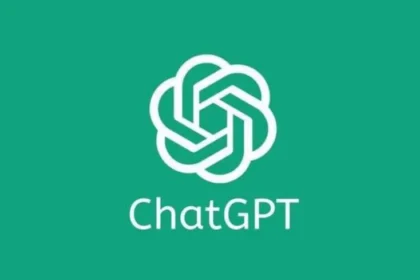
Imagine having a tireless, ever-learning partner in your startup journey — one that adapts to your style, anticipates your needs, and delivers actionable insights in seconds. AI isn’t just a tool; it’s a catalyst for your decision-making, growth, customer discovery, testing ideas, fueling creativity, and getting things done (execution). While many tools and other platforms emerge through AI, many of which assert being ideal for startups, I tend to encourage that founders think more simply, more meaningfully, and rather than seeking and trying dozens of tools to solve problems, stick with the fundamentals. Incorporate ChatGPT into your daily routine and gain an edge no founder should be without.
I’m using ChatGPT for research and to draft investor-ready proposals, the AI is incredibly capable of creating content, be that a paper, an article, a summary, or code, and with frequent use training it to understand your business, your style, and your needs, you unlock how it becomes a member of your team — an AI that evolves with you, learns to anticipate your questions, and delivers precise, actionable output.
Here’s how I want you to start using it right now:
Gathering Research:
- How: Ask specific questions about your industry, competitors, trends, and consumer behavior to quickly synthesize relevant information.
- Compelling Reasons: AI cuts down research time, giving you concise insights without wading through endless articles or data sources.
- What to Look Out For: Double-check facts. AI may occasionally present outdated or inaccurate information; always cross-reference with reputable sources.
Creating Content:
- How: Use ChatGPT to draft blog posts, social media content, email campaigns, and even video scripts. Provide detailed prompts about your brand tone and target audience.
- Compelling Reasons: AI can save hours in the content creation process, maintaining a consistent output even when resources are tight.
- What to Look Out For: Ensure your unique voice shines through. Edit for originality to avoid sounding generic or overly “robotic.”
Generating Ideas:
- How: Brainstorm product features, marketing strategies, or customer engagement initiatives by asking open-ended questions or outlining problems.
- Compelling Reasons: Diverse idea generation can spark creativity and reveal angles you might not have considered.
- What to Look Out For: Not every idea will be feasible. Filter AI suggestions through your business strategy and resources.
Writing Business Plans and Proposals:
- How: Use AI to draft or refine business plans, investor pitches, or grant proposals by providing high-level input.
- Compelling Reasons: Streamlined drafting helps you focus on strategy rather than formatting and language.
- What to Look Out For: AI can’t replace your understanding of your startup’s nuances; use it as a guide, not a replacement.
Enhancing Communication:
- How: Refine email drafts, press releases, or internal memos for clarity, conciseness, and tone.
- Compelling Reasons: Better communication fosters stronger investor relationships, team alignment, and customer trust.
- What to Look Out For: Watch out for overly formal or impersonal tone shifts that might not match your brand ethos.
Market Analysis and Customer Personas:
- How: Describe your business and target market; AI can provide insights into customer needs, behaviors, and pain points.
- Compelling Reasons: These insights help fine-tune product development, messaging, and sales strategies.
- What to Look Out For: Avoid relying solely on AI for in-depth analysis; supplement with firsthand data from customer interviews and surveys.
Prototyping Features or Products:
- How: Ask ChatGPT for user interface ideas, user flow suggestions, or feature prioritization.
- Compelling Reasons: A quick starting point to sketch concepts or validate your vision.
- What to Look Out For: Make sure suggestions align with your technical feasibility and budget constraints.
Customer Support and FAQs:
- How: Build chatbot scripts for automated support or draft FAQ sections to assist customers efficiently.
- Compelling Reasons: Reduces operational costs while maintaining high-quality customer interactions.
- What to Look Out For: AI responses must remain accurate and empathetic; monitor and refine them regularly.
Conducting Outreach:
- How: Use AI to craft personalized outreach emails for potential investors, partners, or customers.
- Compelling Reasons: Personalization at scale improves engagement rates and saves time.
- What to Look Out For: Be cautious of over-reliance on templates; tailor for high-priority contacts.
Continuous Learning and Team Development:
- How: Implement ChatGPT as a training tool for your team to quickly learn industry concepts or polish skills.
- Compelling Reasons: Upskilling with minimal investment accelerates team development.
- What to Look Out For: Ensure accuracy in educational content by vetting it against trusted industry sources.
Other Primary Reasons to Use AI as a Startup:
- Scalability: AI allows startups to perform tasks at scale without significant increases in headcount.
- Cost Efficiency: Automation reduces operational costs and frees up resources for strategic growth.
- Enhanced Decision-Making: AI-generated insights provide clarity, enabling more informed business decisions.
- Personalization: Tailor marketing and product experiences to individual customers with AI-driven recommendations.
The trick to doing this well is a learning curve, albeit a small one so let me wrap up with providing some advice about how to USE ChatGPT to accomplish this. What to prompt…
Article Highlights
Gathering Research
- How: Formulate specific, detailed questions or prompts that guide ChatGPT to provide targeted insights.
- Examples to Ask:
- “What are the current trends in [industry] as of 2024?”
- “What are the top competitors in the [specific product] market, and what differentiates them?”
- “Summarize the latest studies on consumer behavior in [target demographic].”
- “What is the regulatory environment for [industry] in [region]?”
- Refine your prompts by including context about your goals. For instance:
- “I’m launching a fintech startup. What are the key challenges new companies face in this space?”
- Examples to Ask:
Creating Content
- How: Provide ChatGPT with clear guidelines on tone, audience, and purpose. Break your request into sections for a structured response.
- Examples to Ask:
- “Draft a blog post introducing our new product. Our audience is [target market], and our tone is professional but engaging.”
- “Create a social media caption for our new feature launch. It should be no more than 150 characters and appeal to tech-savvy millennials.”
- “Generate a persuasive email script to encourage early adopters to sign up for our beta program.”
- Use follow-up questions to tweak outputs:
- “Make the tone more casual.”
- “Shorten this to fit a tweet.”
- “Include statistics or references to back up this point.”
- Examples to Ask:
Generating Ideas
- How: Be open-ended but focused in your prompts. Allow ChatGPT to suggest ideas you can refine further.
- Examples to Ask:
- “What are some unique marketing strategies for a SaaS startup targeting small businesses?”
- “Suggest innovative features for a [type of product] targeting [audience].”
- “What are creative ways to celebrate our company’s first anniversary while engaging customers?”
- If the ideas feel too general, ask for deeper specificity:
- “Can you provide examples of companies successfully doing this?”
- “Refine this idea for a $5,000 budget.”
- Examples to Ask:
Writing Business Plans and Proposals
- How: Share the structure or specific sections you need help with. Provide key inputs like your business model, goals, or audience.
- Examples to Ask:
- “Draft an executive summary for a business plan focused on [your product].”
- “Help me structure a pitch deck. What should I include for investors in the [specific industry] sector?”
- “Outline a proposal to secure funding for our expansion into [new market].”
- Follow up with revisions:
- “Reframe this for a less technical audience.”
- “Focus more on the financial projections and ROI for investors.”
- Examples to Ask:
Enhancing Communication000.
- How: Ask for improvements on tone, clarity, and structure for your drafts. ChatGPT can act as a communication coach.
- Examples to Ask:
- “Rewrite this email to sound more persuasive: [insert text].”
- “Simplify this technical explanation for non-experts: [insert text].”
- “Draft a follow-up email to a potential investor who hasn’t responded in a week.”
- Always clarify the audience and purpose:
- “This is for a C-level executive. Make it concise and formal.”
- “This is for customers. Make it friendly and easy to understand.”
- Examples to Ask:
Market Analysis and Customer Personas
- How: Use ChatGPT to create personas or evaluate market segments by providing customer demographics, interests, and pain points.
- Examples to Ask:
- “Create a detailed customer persona for a [type of product] targeting [age group] in [region].”
- “Analyze how Gen Z might respond to a [specific feature or product type].”
- “What are common challenges faced by small business owners in [industry]?”
- Use prompts to refine segments:
- “Focus on budget-conscious customers.”
- “Emphasize trends in urban areas.”
- Examples to Ask:
Prototyping Features or Products
- How: Use ChatGPT to brainstorm user flows, design ideas, or feature sets by describing your product and goals.
- Examples to Ask:
- “What should the user flow look like for a mobile app focused on [specific goal]?”
- “Suggest three core features for a [type of product] targeting [audience].”
- “What are intuitive ways to display [specific data] in a user interface?”
- Iterate on suggestions:
- “Make this simpler for first-time users.”
- “Prioritize features for a $10,000 development budget.”
- Examples to Ask:
Customer Support and FAQs
- How: Ask ChatGPT to simulate common customer inquiries and create appropriate responses.
- Examples to Ask:
- “Draft FAQ answers for questions about shipping, returns, and payment options for our e-commerce site.”
- “Write chatbot scripts for handling basic customer queries about [product/service].”
- “How can we respond to customers asking for refunds in a professional but empathetic tone?”
- Refine for brand tone:
- “Make this response more cheerful.”
- “Add a call-to-action for troubleshooting.”
- Examples to Ask:
Conducting Outreach
- How: Provide details about your audience and the action you want them to take. Ask for personalization and compelling subject lines.
- Examples to Ask:
- “Write an email to pitch our SaaS platform to small business owners. Highlight cost savings and ease of use.”
- “Create a follow-up message for potential investors we met at [specific event].”
- “Suggest an attention-grabbing subject line for an email promoting our new service.”
- Tailor outputs:
- “Focus more on the ROI for investors.”
- “Include a personal touch referencing their company.”
- Examples to Ask:
Continuous Learning and Team Development
- How: Use ChatGPT to simplify complex topics or provide summaries of industry updates. It can also create role-specific training materials.
- Examples to Ask:
- “Explain blockchain in simple terms for a non-technical audience.”
- “Summarize the key takeaways from [specific book or article].”
- “Create a step-by-step guide for new employees on using [specific tool or process].”
- Adjust for level of detail:
- “Make this explanation more technical.”
- “Focus on the implications for [specific role].”
- Examples to Ask:
Integrating ChatGPT into your daily operations isn’t just a theoretical advantage; it’s a practice backed by research and real-world applications. For exactly the same reasons that we used to preach that you must do SEO, AI isn’t just a platform or innovation, it is fundamentally changing how we work. A study by MIT researchers found that professionals using ChatGPT for writing tasks experienced a 37% increase in productivity, completing tasks 40% faster than those without AI assistance.
Startup founders have also recognized the value of ChatGPT. Marc Manara, head of Startups at OpenAI, highlighted AI’s transformative impact on entrepreneurship, emphasizing how tools like ChatGPT can streamline processes and foster innovation. Parents, take note, a survey by Intelligent.com revealed that 49% of business leaders consider experience with ChatGPT more valuable than a college degree, especially for certain roles.
Align with the changes in entrepreneurship that enhance your efficiency and decision-making, supported by both empirical evidence and industry leaders’ experiences. Use AI, now.






You missed the main benefit. It’s a cofounder that doesn’t need equity and only has a “salary” of $20/mo!
While ChatGPT undoubtedly boosts productivity, we must consider its limitations in strategic decision-making and creative breakthroughs. True innovation often stems from human intuition, experience, and the ability to connect seemingly unrelated dots—skills that AI currently lacks. Moreover, over-reliance on AI could potentially homogenize startup approaches, leading to a loss of unique competitive advantages. Instead of viewing ChatGPT as a co-founder, perhaps we should see it as a powerful assistant that amplifies human creativity and efficiency, rather than replacing the irreplaceable human element in entrepreneurship.
Mark Donnigan For sure, it’s an assistant, though I’d challenge people to not be dissuaded by limitations because people have limitation. Get to know intimately what it does, because it’s also learning and adding abilities far more quickly than people; get in on it early so you learn what’s possible as it outpaces our expectations.
Absolutely agree with this. I happen to use Claude.ai and it’s been a phenomenal business partner.
Yes. Solopreneurism: where you’re the CEO, janitor, and overworked intern all rolled into one—because why share the stress when you can hoard it all yourself?
We believe there is a new kind of start-up where a founder or in our case, co-founders, are able to complete the roles of 8 people through leveraging AI. This greatly extends the bootstrap period and allows companies to build significant value before dilution for funding. Not only does this create a more compelling investment for VC and angels, it gives founders a lot more leverage to negotiate with early on. Why sell equity when the valuation is still low if you don’t need head-count?
Mark Leutwyler I think it’s quite possible. But there’s challenges with GTM even with AI, due to monopolistic distribution networks needing toll fees to relay the messages and arbitrary gatekeepers. If you know ways around that with AI I’d love to hear. But AI certainly makes product dev much easier!
AI can help with content led marketing and consistency. But yes, there is a CPC element at work with paid that requires a certain amount of funding. A lot depends on the product market fit and the community around that market. Community advocacy is really the only way I know around the pay to play gatekeepers and AI can only help with that indirectly. (Founder led marketing, content marketing, etc)
Id also say that, from my experience, AI is a good generalist but not an expert, at least not to the extent that one would want to rely on it solely. Still lots of mistakes that an expert, through personal experience, can navigate around.
Certainly not ready to completely replace headcount completely, but does a great job of filling in knowledge gaps for founders early in the lifecycle.
That being said, our SaaS is based on neural networks and deep learning components, so we are leaning heavily on AI across the entire endeavor.
We may end up being a germaine use case, good or bad.
I’m glad my sister tagged me to read this post. I 100% agree. In fact, I built my co-founder last week and tweaked it to my business plan and offering- even named it ScalePilot. Its different from the ‘brain’ of the business- another GPT- for brainstorming ideas and deciding on tool building.Thanks for sharing
Vivian Nzegbulem now explore how it can do most of your marketing
Paul O’Brien I did, and there are a treasure-load of steps. It ended by asking if it could help with creating a marketing calendar. So I’m going to pump it for more information and create a marketing GPT that will work on the details. The possibilities are endless – I’m already thinking to automate the process. Co-founder makes a suggestion, Marketer gets to work on it – then either posts it or wait for my approval. Love the idea
Enjoyed the read, reminder to adapt or die.
Keenan Stone you might enjoy my follow up and focus, we need to work through it in marketing first:
https://www.linkedin.com/feed/update/urn:li:activity:7270521156338626562/ <-